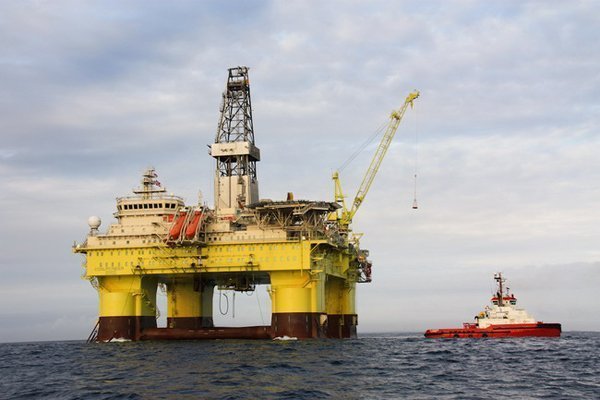
Following an accident involving COSLInnovator on December 30 2015, some 100 semi-submersible rigs approved by class society DNV GL will be reviewed. Preliminary assessments indicate that a limited number of rigs will be subjected to modifications or operational limitations.
The semi-submersible rig COSLInnovator was drilling for Statoil in the Troll field when it was hit by a large, steep wave. Several windows on the rig’s two lower decks were shattered. One person was killed.
“Since the incident, we have made great efforts to identify what happened, understand how this could happen and, most importantly, implement actions to prevent similar incidents from occurring again,” said Ernst Meyer, DNV GL director for offshore classification. “We have been working with rig owners, designers, operators and authorities towards a common goal; to ensure the safety of all those working on board the rigs.
The incident investigation report presented by the Norwegian Petroleum Safety Authority in April 2016 concluded that the incident involving COSLInnovator has provided new knowledge that must be utilized in order to prevent similar incidents in the future. DNV GL therefore published a new technical guideline in June.
Last week, DNV GL asked all owners of DNV GL-classed semi-submersible rigs to provide updated documentation of each rig’s air gap.
Rigs that, based on the new technical guideline, can confirm a positive air gap, will be able to operate as before without reinforcement or operational limitations. This is expected to apply to most of the semi-submersible rigs operating on the Norwegian shelf.
“I can’t indicate how many rigs have negative or positive air gaps before each rig’s calculations have been performed,” said Meyer.
“A limited number of rigs may not have a positive air gap, but most of these will be able to avoid changes. The prerequisite is that they are able to document a positive air gap for a specific location, or that they simply do not have windows that may be exposed to waves.”
Meyer elaborated on the consequences for the other rigs – those that are unable to prove a positive air gap in all sea conditions – including the hundred-year wave: “Initially for the next winter, these rigs will be required to remove windows in exposed zones. If the strength calculations show that further structural modifications are necessary, such modifications will be required as part of the permanent solution.
“The most important thing is that the windows are removed before the coming winter. This action eliminates the largest risk elements if a similar incident occurs,” Meyer explained. He emphasized once again that operational limitations and limitations with regard to areas of operation may solve the air gap issue in the short term.
Rigs that are certified for worldwide operation must be documented according to North Atlantic wave data. Most rigs operate in milder areas, such as the North Sea, and can postpone modifications that may be necessary in the Norwegian Sea or Barents Sea.

 on December 30 2015, some 100 semi-submersible rigs approved by class society DNV GL will be reviewed. Preliminary assessments indicate that a limited number of rigs will be subjected to modifications or operational limitations.
on December 30 2015, some 100 semi-submersible rigs approved by class society DNV GL will be reviewed. Preliminary assessments indicate that a limited number of rigs will be subjected to modifications or operational limitations.